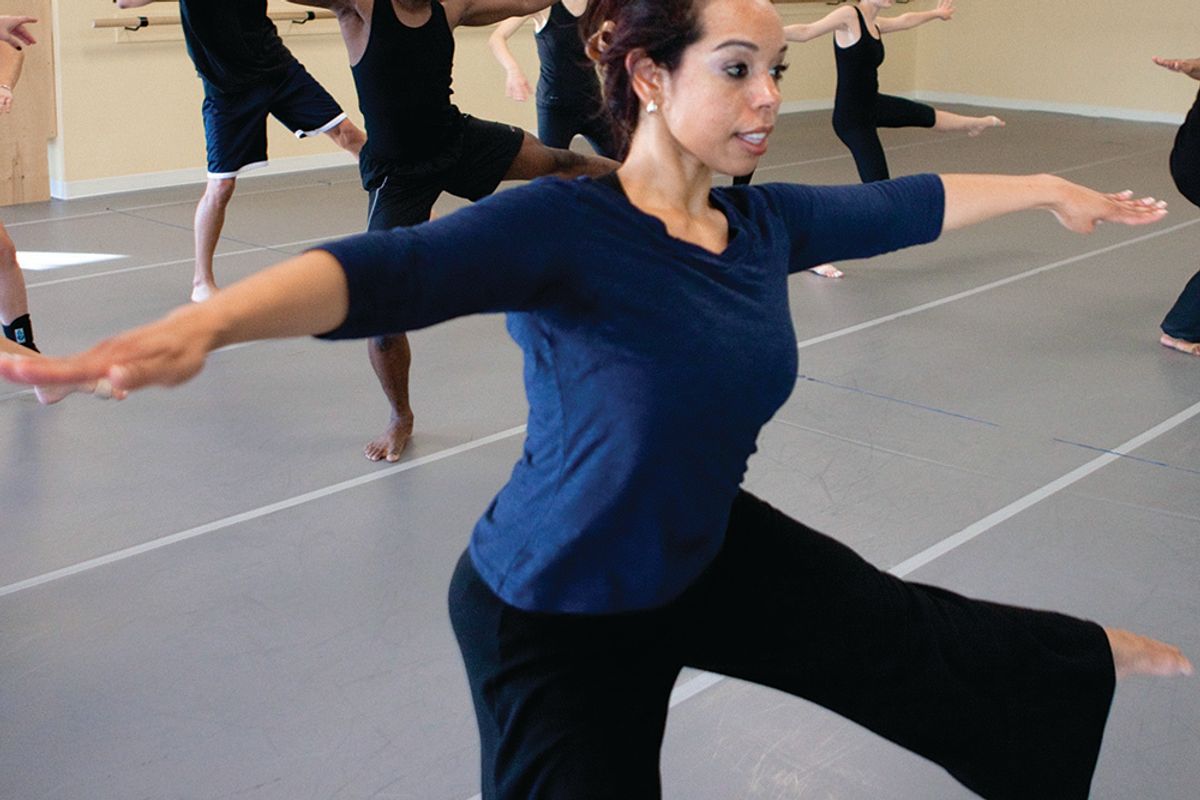
For the past 20 years, Ohio State University professor Nyama McCarthy-Brown has been advocating for dance pedagogy that embraces students’ cultural backgrounds. “When you look at a textbook and all you see is Western-based dances or people moving in ways that point back to a Eurocentric culture, how do you value other cultures?” she asks. “How do we value other cultures when we’re not seeing them in every place that we’re told is important?”
In her 2017 book Dance Pedagogy for a Diverse World: Culturally Relevant Teaching in Theory, Research and Practice, McCarthy-Brown details her approach, which hinges on researching the cultural backgrounds of the students in the room and teaching with these in mind. Integrating students’ cultural practices into dance curriculum, especially in K–12 schools, enables students to be seen and valued, and to have a more positive learning experience.
Here, she outlines what she’s learned from her own experiences and gives fellow teachers strategies to be culturally inclusive in the dance classroom.
Marginalization in the Classroom
In 1999, McCarthy-Brown began teaching dance in Oakland public schools, where her student body was predominantly African Americans, Latinos and Asians. She started noticing just how much race, class, gender and culture played a role in the classroom. “I started paying attention to students who are marginalized because of their culture,” she says. “What does it mean to invisibilize someone’s culture and not let them count?”
Later, tasked with teaching ballet and modern to African-American students from inner-city Atlanta, McCarthy-Brown was met with friction and resistance. “They didn’t want to engage, because I didn’t meet them halfway in honoring their culture,” she says.
Doing the Research
McCarthy-Brown shifted her approach. She asked students about dances they did with their families and communities, and if she could attend their quinceañeras. She invited them to share the movements that they enjoyed doing. She gave them class time to figure out what their preferences were. “It’s all about who is in the room,” she says. “It’s not about the abstract: ‘Oh, I have African Americans, so that means they do this.’ No, it’s about who is in this room at this particular time.”
McCarthy-Brown says that work starts with getting to know your students. Asking some basic questions about their lives outside of school goes a long way: “What are the dances of this person’s culture? What are the songs? What are the rhythms? What are the movements that will resonate with them? Where do they live? Do they dance at home? What are the markers of tradition in their family?”
Culture in Class
After learning what dance and cultural practices are valued by your students, it’s time to incorporate them into your class plan. McCarthy-Brown does this in different ways. One successful strategy has been to embed her students’ own movements into her combinations so they can see themselves in the material.
Another tactic is to shift teaching formation. Many cultural dances and traditions are done in the round. Sometimes McCarthy-Brown will teach certain exercises in a circle. It’s familiar to many of the students and can shift the energy in the room from hierarchical to communal.
Imagery is an incredibly powerful teaching tool, especially when students are given the opportunity to offer their own images. “I don’t want to point to things that refer back to my culture,” says McCarthy-Brown. “I want to point back to theirs.” For example, instead of saying “Melt like fondue,” she may ask, “What’s something that melts?” Students can then shout out what comes to mind before dancing the image.
Inclusion Instead of Imitation
McCarthy-Brown stresses mindfulness and caution when integrating dance forms that you’re not familiar with. “You have to be careful about how culture is navigated within a dialogue of appropriation,” she says. Also, institutionalizing a dance form that is not made to be codified.” She uses hip hop as an example. “Hip hop was created in an atmosphere that is syllabic. It’s more sophisticated than a 4/4 meter, so when you see it set to counts and represented in this commercialized form, there are definitely tensions from the community from which it was co-opted.”
The key is to approach it with curiosity and focus on including and incorporating rather than imitating. “Culturally relevant teaching doesn’t mean turning your class upside down and starting from scratch,” says McCarthy-Brown. “It means being open to include.”
Unified Teaching
The long-term ramifications of this inclusive approach to dance pedagogy could be game-changing for dancers of all races and cultural backgrounds, letting them thrive in learning environments where they are not just validated, but celebrated.
However, for this kind of approach to be successful, it needs to happen across all dance classes. “I think the idea that it doesn’t apply to certain genres and certain aspects of dance is wrong,” says McCarthy-Brown. “If it’s not supported across the board, students see that. It has to be a commitment by all the faculty—in ballet, modern, jazz, dance history and African. After all, cultural relevancy is about the reflection of students’ own identities. Hopefully you’re doing that in every class.”
Further Reading
Dance Pedagogy for a Diverse World: Culturally Relevant Teaching in Theory, Research and Practice, by Nyama McCarthy-Brown
“Dancing With Diversity: Students’ Perceptions of Diversity in Postsecondary Dance Programs,” by Karen Schupp and Nyama McCarthy-Brown
“‘I Don’t Want to do African…What About My Technique?’: Transforming Dancing Places into Spaces in the Academy,” by Raquel L. Monroe




